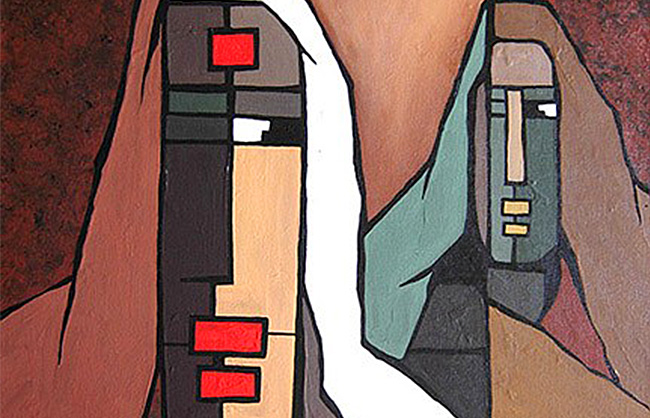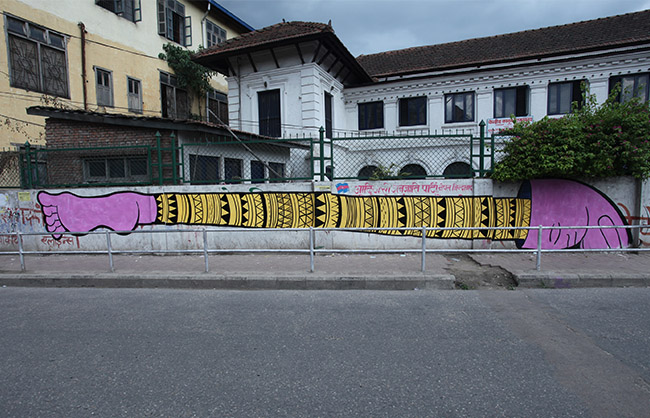Writing
Project Details
Title: The last one
Category: Writing
Date: 25 November 2015
Share:
He died at 22. It was a bike accident, but I recall it as the ultimate consequence of lawlessness.
It was not hard for me to find his home in Banepa. Back in our schooldays, he had given me a ride to a festival near his house. Only, this time I was visiting not to rejoice, but to comfort his family bereaved by his unexpected loss.
When I reached the ancient brick-and-mud house, a young lad around my age opened the door for me. He looked delicate and slender, with a thin moustache lining his upper-lip. I introduced myself as a friend of Frank Kayastha, but he did not respond. I was quietly led into a small room where the sight of aggrieved faces suddenly turned my heart. Namaste, I said, trying to conceal my identity as a journalist, even as my camera dangled from my huge backpack. An unkempt, middle-aged man with a wild mass of grey beard asked me to be seated. I later identified him as my friend’s father. I sat behind a row of strange, sad faces. A strong smell of oil lamp, incense and fruits lingered in the room. Newly framed photographs of my friend, covered with garlands, rested against the wall on the tea-table. A lamp burned steadily before the photos, its shimmering flame struck my eye. As always, Frank’s face looked serene and guileless.
His mother’s face gleamed with the light entering through the carved lattice window. She wore a kurta and a white shawl of mourning. Her head rested on her knees, tears streamed from her eyes, which retained their beauty even amidst such unbearable grief. She wept silently as if pain had smothered her voice. She was a nurse, well accustomed to suffering and anguish, but this time she had lost her only son.
Visitors flowed past paying respects while I sat dazed, trying to imagine the incident that killed my friend.
Frank Kayastha, 22, a fifth semester pharmacy student at Kathmandu University, was on his way home from Kathmandu. He was to go on a nationwide educational tour the very next morning. He had learned to ride a bike when he was 12 and at age 20 obtained a license following all the legal procedures. While he was learning to ride, his father had ridden along with him six times to Kathmandu and back. He was a confident rider and never cared to own a modified bike.
Frank’s final moment of consciousness was perhaps his thunderous crash into a public bus accelerating from the left side of the Araniko Highway at Sallaghari. As passengers later testified, the bus was clearly on the wrong side of the road. Frank’s breaking tires left a 10 metre long dark scar on the pavement. He was immediately rushed to Sheer Memorial Hospital in Banepa. But he had died on the spot. The post mortem revealed that the right side of his body, including his lungs, were completely crushed. Locals burnt the bus with his bike — perhaps the only evidence of what actually happened — beneath it. The district administration had to call a curfew to manage the situation.
Around 4000 road accidents occur in Nepal annually, 2000 in Kathmandu alone. Most of them do not result in casualties, but over 800 still result in death, according to the Traffic Directorate at Nepal Police Headquarters. We can view Frank’s case as just one of them, or the other way round: all those who lost their lives were Frank.
Working in a newsroom, I knew of this incident the day it happened, but this time my convenient philosophy of treating all news as normal was shaken to the core. I was shocked to see how only one or two local newspapers reported the incident. Some electronic sources did not even pronounce his name correctly. Had he been a popular face, a journalist or a prominent personality, hell would have broken loose. As for the protesters who blockaded the highway for two days, they were just following the fashion. Frank’s father had specifically requested them not to launch futile protests.
Each day road accidents result in numerous deaths, but no one is moved, or moved to action, by these tragedies. The frequency of such incidents has made us apathetic. People break traffic rules just because they are used to breaking them. And there are those Sahibs who enjoy the luxury of mobile conversations, smoking and spitting out of the window while driving. Vehicles try to outdo each other as though they were on a racecourse. And if you make a mistake and kill someone, well, luck remains on your side. The Drivers’ Association covers the vehicle insurance, and the victim’s kin receives a compensation of Rs. 17,000 from the government. In the end, the blunder of maiming or killing someone costs you little.
And yet bikers cannot stop displaying their machismo with nerve-racking speed. Modified bikes, fake licenses, narrow and dilapidated roads, drunk driving, loose laws and the bribe culture compound into a frustrating scenario. Impunity continues in the cases of people like Frank Kayastha, who are killed by someone else’s recklessness. Our lawmakers are yet to take such losses seriously.
As I sat in that room filled with sorrow, all my journalistic ethics and skills seemed meaningless. As a cartoonist, I always believed myself to possess a particular sense of humour and an eye for the ironies of life. But at that moment, I was blind. A mother had lost her only son and a family had lost hope. What could I do? Feeling utterly dejected, I got up to leave and asked Frank’s father if I could ease his burden in any way. I knew no amount of compensation, no crown of martyrdom could redeem his loss. So the question seemed pointless. But then, he surprised me with a response. I just hope ,” he said, “that my son is the last one to die in such an accident.
Printed on: 2009-02-08 | FEB 08








